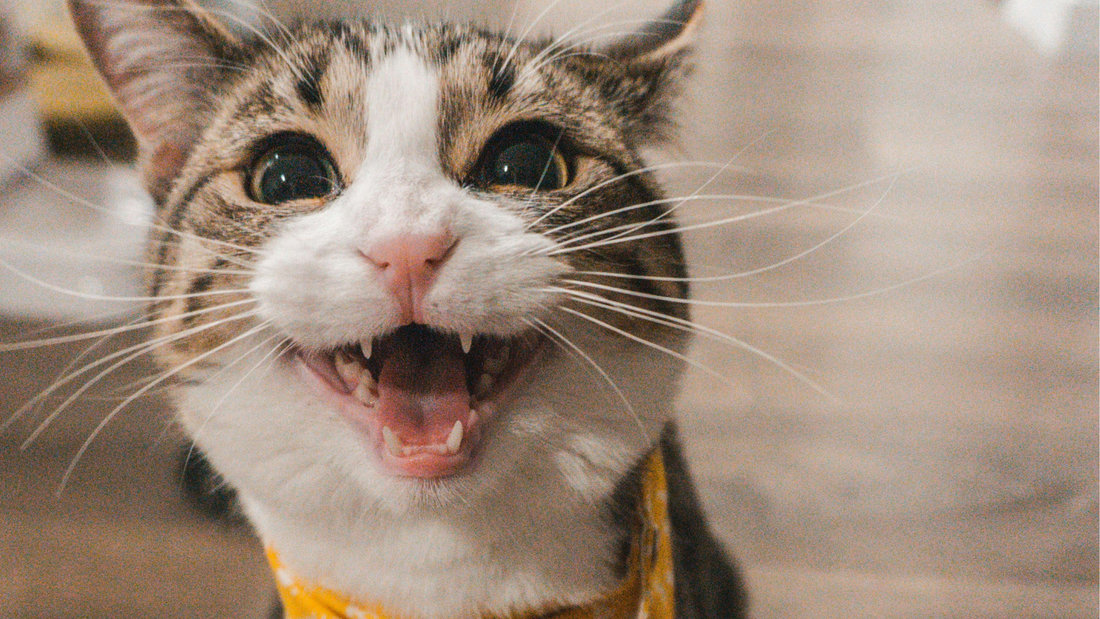
The Ultimate Guide to Choosing the Perfect Accessories for Your Pet
Share
Have you ever walked into a pet store or browsed online, only to feel completely overwhelmed by the endless rows of collars, toys, beds, and grooming tools?
Choosing the perfect accessories for your pet isn’t just about picking what looks cute — it’s about making choices that ensure your furry, feathered, or scaly friend lives a happier, healthier life.
In this ultimate guide, we’ll break down everything you need to know about selecting the right accessories for your pet, why it matters, and how to avoid common mistakes. Whether you're a first-time pet owner or a seasoned animal lover, this guide will help you make informed, confident choices.
Why the Right Pet Accessories Matter
The accessories you choose directly impact your pet's comfort, safety, mental stimulation, and even their health.
Poor-quality or ill-fitting items can cause injury, stress, and behavioral problems.
Key Facts:
- 62% of pet injuries are linked to poorly designed or unsuitable accessories. (Source: American Pet Products Association)
- Well-fitted collars and harnesses reduce the risk of neck and back injuries by 47%.
- Toys designed for mental stimulation can decrease anxiety-related behaviors by 40%.
Choosing thoughtfully can extend your pet’s quality of life — and save you costly vet visits.
Essential Categories of Pet Accessories
Let's look at the primary categories of accessories every pet owner should know about:
| Accessory Type | Purpose | Example Items |
|---|---|---|
| Collars & Harnesses | Safety and control | ID tags, training collars, no-pull harnesses |
| Bedding & Crates | Comfort and security | Orthopedic beds, crate covers |
| Toys & Entertainment | Mental and physical stimulation | Chew toys, puzzle games |
| Grooming Tools | Hygiene and health | Brushes, nail clippers |
| Feeding Supplies | Nutrition and convenience | Bowls, automatic feeders |
| Travel Accessories | Safety during transport | Car seats, travel crates |
Choosing the Right Accessories for Different Pets
Each type of pet has specific needs. Let’s break it down:
For Dogs
Dogs vary greatly in size, activity level, and coat type.
-
Collars and Harnesses:
- For small breeds: Lightweight harnesses prevent tracheal collapse.
- For large breeds: Padded, strong harnesses distribute pressure evenly.
-
Toys:
- Active dogs need durable chew toys and agility equipment.
- Seniors benefit from soft, squeaky toys.
-
Beds:
- Orthopedic beds for older dogs help with joint pain.
- Heated beds are perfect for short-haired breeds in colder climates.
For Cats
Cats are agile, curious, and love a cozy retreat.
-
Collars:
- Breakaway collars prevent strangulation.
-
Toys:
- Laser pointers, feather wands, and interactive puzzle toys keep cats stimulated.
-
Beds and Towers:
- Cat trees encourage climbing and scratching, reducing damage to furniture.
For Birds
Birds need more than just a perch.
-
Cages:
- Spacious cages with horizontal bars for climbing are essential.
-
Toys:
- Foraging toys and swings promote natural behaviors and mental stimulation.
For Small Animals (Rabbits, Guinea Pigs, Hamsters)
Small pets need safe, chew-proof environments.
-
Cages:
- Wire cages with solid flooring avoid foot injuries.
-
Accessories:
- Tunnels and chew toys satisfy natural behaviors and prevent boredom.
For Reptiles
Reptiles require accessories that replicate their natural habitat.
-
Terrariums:
- Proper heat lamps, UVB lighting, and substrate choices are crucial.
-
Decor:
- Hides, branches, and climbing structures enrich their environment.
Key Factors to Consider Before Buying Pet Accessories
Choosing accessories without research can lead to waste or even harm. Here's what to focus on:
1. Size and Fit
Ill-fitting collars, harnesses, or beds can cause discomfort or injury.
Tip: Always measure your pet carefully and refer to manufacturer sizing charts.
2. Material and Quality
Look for durable, non-toxic, and pet-safe materials.
Materials to Prefer:
- Organic cotton
- Stainless steel
- BPA-free plastics
- Natural rubber
Materials to Avoid:
- Cheap plastics (can cause allergies)
- Painted toys (risk of paint chipping)
3. Pet’s Age and Health
Senior pets and those with medical conditions require specialized accessories.
| Age Group | Recommended Accessories |
|---|---|
| Puppies/Kittens | Soft toys, adjustable collars |
| Adults | Heavy-duty harnesses, durable toys |
| Seniors | Orthopedic beds, joint-support harnesses |
4. Ease of Cleaning
Accessories that are washable or easy to clean maintain hygiene and prevent infections.
5. Safety Features
Look for reflective materials for night visibility, breakaway features for cats, and chew-resistant designs for small pets.
How to Choose Accessories Based on Your Pet's Lifestyle
Every pet has a unique personality and lifestyle. Tailoring accessories to their behavior ensures better engagement and happiness.
Active Pets
- Need rugged toys, no-pull harnesses, cooling beds.
- Collapsible travel bowls for hikes and outdoor adventures.
Couch Potatoes
- Orthopedic beds, plush toys, interactive feeders to encourage movement.
Anxious Pets
- Calming beds, pheromone sprays, soft chew toys.
Top Mistakes Pet Owners Make When Buying Accessories
Even experienced pet owners can make mistakes. Avoid these common errors:
- Choosing by Looks Alone: Style should never compromise safety and function.
- Wrong Sizing: Many injuries stem from ill-fitting gear.
- Ignoring the Pet’s Preference: Some pets dislike certain textures or shapes.
- Buying Cheap, Low-Quality Items: Always invest in trusted brands with strong safety records.
- Skipping Regular Replacement: Damaged toys or worn-out collars can become hazards.
Popular and Trusted Brands for Pet Accessories
| Brand | Best For | Website |
|---|---|---|
| Ruffwear | Adventure and outdoor dogs | ruffwear.com |
| Kong | Durable chew toys | kongcompany.com |
| Sleepypod | Travel safety | sleepypod.com |
| PetSafe | Training and containment | petsafe.net |
| Midwest Homes for Pets | Crates and cages | midwesthomes4pets.com |
How Often Should You Replace Pet Accessories?
Many pet owners aren’t sure when it's time for new gear. Here’s a quick guide:
| Accessory | Replacement Frequency |
|---|---|
| Collars and harnesses | Every 6–12 months or when worn out |
| Beds | Every 1–2 years |
| Toys | As soon as damaged |
| Bowls | Annually, or if cracked or scratched |
| Grooming tools | Every 6 months to 1 year |
Keeping accessories updated ensures your pet’s continuous safety and comfort.
Final Thoughts: Choosing Accessories is an Act of Love
Choosing the perfect accessories for your pet isn't about filling your home with stuff — it's about creating an environment where your pet feels loved, safe, and fulfilled. Each thoughtful decision — from the softness of their bed to the strength of their leash — shows care that your pet understands in their own beautiful way.
Take your time. Observe your pet. Select with heart.
And remember, the right accessories can turn everyday moments into the happiest memories for you and your best friend.
FAQs About Pet Accessories
Q: Are expensive pet accessories always better?
A: Not necessarily. Focus on safety certifications, reviews, and material quality over brand hype.
Q: Can a wrong toy make my pet sick?
A: Yes. Toxic materials, small detachable parts, or toys not suited to your pet's size can cause choking or poisoning.
Q: How many toys should my pet have?
A: Rotate 3-5 toys weekly to keep your pet interested and stimulated.
